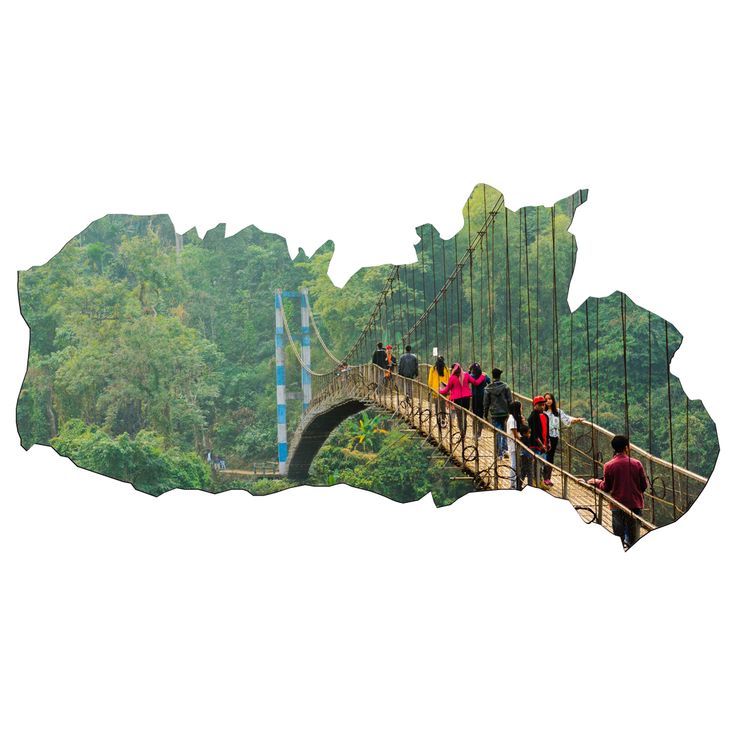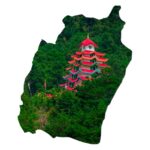Meghalaya: 7 Fascinating Insights into Its History, Culture, and Significance
Introduction
Nestled in the northeastern region of India, Meghalaya—which literally translates to “The Abode of Clouds”—is a state that boasts breathtaking landscapes, a rich cultural heritage, and a vibrant way of life. Known for its lush green hills, cascading waterfalls, and unique traditions, Meghalaya offers a glimpse into a world where nature and culture intertwine harmoniously. From the daily lives of its people to the state’s political significance, let’s explore the diverse aspects of Meghalaya’s biography, its historical context, and why it holds a prominent place in the hearts of its residents and India as a whole.
History of Meghalaya
Meghalaya’s history is rooted in its deep connection with the indigenous tribal communities, including the Khasi, Garo, and Jaintia tribes. These tribes have inhabited the region for centuries, with their distinct cultures, traditions, and languages. Meghalaya was once part of the larger Assam state but became a full-fledged state in 1972. The region’s historical significance can also be attributed to its colonial-era involvement when the British recognized the strategic importance of the Khasi hills.
Over the years, Meghalaya has witnessed several social, economic, and political changes, with an ongoing struggle for autonomy and development. Despite being one of the smaller states in India, it has contributed significantly to the cultural diversity of the country.
Daily Life and Impacts in Meghalaya
The daily life of people in Meghalaya is characterized by a close relationship with nature, community engagement, and traditional practices. The state’s tribal populations continue to practice agriculture, with rice farming as a primary occupation, along with growing crops like betel nuts, ginger, and pineapple.
Meghalaya is also renowned for its cultural diversity. The Khasi, Garo, and Jaintia tribes have their unique languages, customs, and ways of life. This diversity is reflected in the vibrant festivals and rituals that are observed year-round. For example, the Ka Shad Suk Mynsiem festival celebrated by the Khasi people involves traditional dance and music, while the Nongkrem festival honors the land and spirits of the ancestors.
The state’s hills and forests provide a natural habitat for a variety of flora and fauna, making the people of Meghalaya highly reliant on nature for their daily needs. The environmental significance of the region is vast, with the living root bridges, biodiversity hotspots, and rainforests that serve as a reminder of the region’s natural richness.
Meghalaya is also increasingly known for its education system. While urban areas like Shillong have developed into educational hubs, the state still faces challenges related to infrastructure and economic development. However, with a strong focus on sustainable practices and cultural preservation, Meghalaya continues to progress.
Key Facts About Meghalaya
- Geography: It is a land of picturesque hills, valleys, and waterfalls, often covered in mist.
- Capital: The capital of Meghalaya is Shillong, known as the “Scotland of the East.”
- Languages: The primary languages spoken are Khasi, Garo, and Jaintia, with English used for official communication.
- Festivals: It is home to several important festivals such as Shad Suk Mynsiem, Nongkrem, and Wangala.
- Climate: The state experiences a temperate climate, with some regions being among the wettest places on earth, especially Mawsynram.
- Ecological Significance: It’s rainforests and living root bridges are notable ecological landmarks.
- Sports: Football is the most popular sport, with the state producing several talented players.
Significance
It’s significance lies not only in its natural beauty but also in its cultural and ecological importance. The state has a rich tribal heritage, which makes it a key part of India’s diverse cultural fabric. The region is also crucial in terms of biodiversity. It is home to several rare species of flora and fauna and boasts lush green forests that play an essential role in preserving the environment.
The state is significant for its tribal systems. The matrilineal society of the Khasi tribe, where inheritance and family lineage pass through the mother’s side, is a fascinating and unique social structure. This gender-inclusive system is a remarkable aspect of the state’s culture that continues to attract attention.
The state’s economic importance lies in its mineral wealth, particularly coal and limestone, though there is a growing emphasis on eco-tourism and sustainable practices. Meghalaya also plays a vital role in India’s northeastern geopolitics, sharing borders with Bangladesh and being strategically important in terms of defense and regional trade.
Observance and Importance in Society
The observance of festivals in Meghalaya is an important aspect of the state’s cultural life. These festivals are not just about celebrations; they are rituals that reflect the spiritual beliefs and agricultural cycles of the people. The Nongkrem festival, for instance, is a prayer for a good harvest and well-being, demonstrating the deep connection between the people and the land.
Moreover, the living root bridges of Meghalaya, created by the indigenous Khasi people, are an extraordinary example of eco-friendly architecture. These bridges, made by guiding the roots of trees over many years, not only serve a practical purpose but also symbolize the harmonious relationship between humans and nature. The Meghalaya handloom industry, particularly the famous Khasi shawls, is another reflection of the state’s rich cultural heritage.
Wishing and Significance in Society
People from Meghalaya often greet one another with warm wishes, especially during festivals. For example, during Ka Shad Suk Mynsiem, people exchange wishes for prosperity and good harvests. Wishing each other a bountiful year and good health is a common sentiment shared during these communal celebrations.
In Meghalaya, the act of wishing isn’t merely about politeness, but about reinforcing bonds of kinship and community. The state places a high value on hospitality, where welcoming guests is not only a cultural tradition but also a point of pride.
FAQs About Meghalaya
- What is the capital? The capital of Meghalaya is Shillong.
- Which tribes live? The Khasi, Garo, and Jaintia tribes are the primary indigenous communities in Meghalaya.
- What are the famous festivals? Shad Suk Mynsiem, Nongkrem, and Wangala are the most popular festivals celebrated in the state.
- What is unique about the Khasi tribe? The Khasi tribe has a matrilineal society, where lineage and inheritance pass through the mother’s side.
- What is the significance of the living root bridges? The living root bridges in Meghalaya are an extraordinary example of eco-friendly architecture and the deep connection the Khasi people share with nature.
Conclusion
Meghalaya, with its lush landscapes, tribal heritage, and cultural diversity, is a state that embodies the essence of India’s northeastern beauty and complexity. From its deep-rooted traditions to its ecological significance, Meghalaya continues to captivate and inspire those who visit. Its people, grounded in resilience, community, and a profound connection to nature, serve as a testament to the rich cultural legacy of the state, making it a valuable part of India’s socio-political and cultural fabric.










